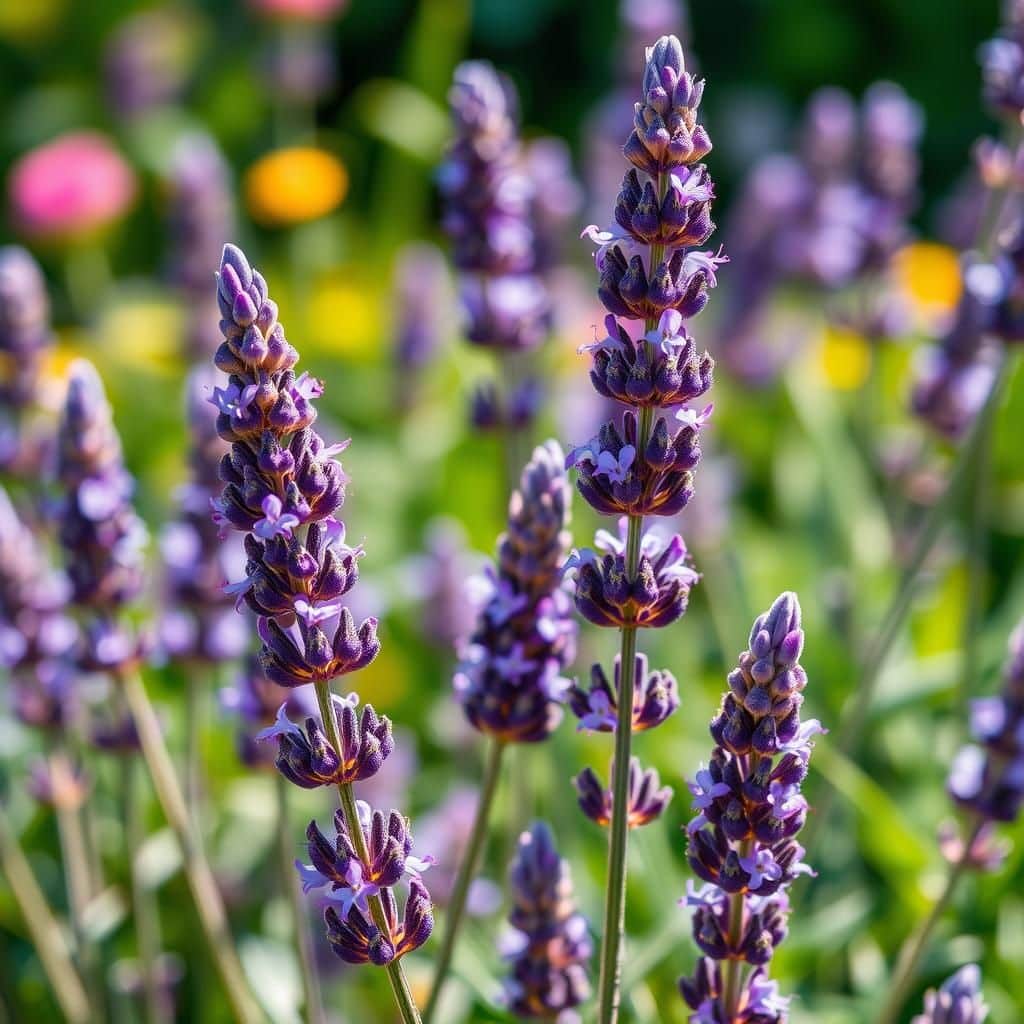When Do Lavender Flowers Bloom: A Seasonal Guide for Gardeners and Flower Enthusiasts

Lavender flowers are beloved for their stunning color and soothing fragrance, making them a favorite among gardeners and flower enthusiasts alike. Understanding when these beautiful blooms appear is essential for successful gardening and optimal enjoyment. This seasonal guide will explore the blooming schedule of lavender, detailing the various species and their specific flowering times. By recognizing the ideal conditions for growth and bloom, you can create a vibrant lavender display in your garden, attract pollinators, and make the most of these enchanting flowers throughout the year. Dive in to discover the timing and tips for cultivating this aromatic favorite.
When Do Lavender Flowers Bloom?
Lavender flowers typically bloom in the summer, with the peak blooming season occurring from late spring to early summer. The exact timing can vary based on the specific variety of lavender, as well as the climate and growing conditions. In general, most lavender plants begin to produce buds in May, and the flowers usually fully open by June and July. By keeping in mind local weather patterns and the specific growing requirements of lavender, gardeners can expect a vibrant display of purple hues during this time.
Factors Influencing Bloom Time
Several key factors influence when lavender flowers will bloom, including temperature, sunlight, and water availability. Lavender thrives in well-draining soil and prefers full sunlight to encourage blooming. In climates with mild winters and warm summers, lavender may bloom earlier, while in cooler regions, the bloom time can be delayed. Additionally, proper care and maintenance, such as pruning and fertilization, can also affect blooming times.
Different Varieties of Lavender
There are more than forty species of lavender, and each variety has its own bloom timeline. For example, English lavender (Lavandula angustifolia) typically blooms in late spring to early summer, while French lavender (Lavandula stoechas) can have a longer blooming period that may extend into fall. Understanding the specific traits of different lavender species can help gardeners choose the right variety for their desired blooming season.
Geographical Influence on Blooming
The geographical location of a lavender plant plays a significant role in determining when it will bloom. In warmer climates, like those found in the Mediterranean or southern regions of the United States, lavender tends to bloom earlier in the season, often starting as early as April. Conversely, in regions with harsh winters or shorter growing seasons, blooming can be postponed until late June or even July.
Seasonal Maintenance Tips
To achieve the best blooming results, seasonal maintenance is crucial. Regular pruning in late summer or early fall helps maintain plant health and encourages more vigorous blooming the following year. Additionally, ensuring that lavender plants receive adequate water without becoming waterlogged contributes to healthier blooms. Fertilization, if needed, should be done sparingly to avoid excessive leaf growth at the expense of flowers.
Signs of Approaching Bloom
As lavender approaches its bloom stage, there are several signs to look out for. The plants may begin to form buds in late spring, and the foliage will result in a vibrant green color. The buds themselves often exhibit a slight swelling before they bloom into the characteristic purple flowers. Keeping an eye on these signs allows gardeners to prepare for the upcoming vibrant display.
| Variety | Bloom Time |
|---|---|
| English Lavender | Late Spring to Early Summer (May-July) |
| French Lavender | Spring to Fall (April-September) |
| Spanish Lavender | Late Spring to Early Summer (May-July) |
| Lavandin | Early to Mid-Summer (June-July) |
What months does lavender bloom?


Lavender typically blooms during the summer months, primarily between June and August. However, the exact timing can vary depending on the specific variety of lavender and the local climate. In general, lavender plants begin to show buds in early summer, and the blossoms fully open during these three months. Once the bloom commences, it can last for about 4 to 6 weeks, making this period the most vibrant time for lavender enthusiasts and gardeners alike.
Factors Influencing Bloom Time
The blooming period of lavender can be affected by several factors, including:
- Climate: Warmer climates may lead to earlier blooms.
- Soil Conditions: Well-drained soils can promote healthy growth.
- Variety: Different types of lavender bloom at varied times.
Popular Lavender Varieties and Their Blooming Months
Different varieties of lavender have distinct blooming schedules:
- English Lavender (Lavandula angustifolia): Typically blooms from late June to early August.
- French Lavender (Lavandula dentata): Blooms earlier, often from late spring to mid-summer.
- Spanish Lavender (Lavandula stoechas): Usually flowers from May to July.
Caring for Lavender to Enhance Blooming
Proper care can significantly impact blooming:
- Watering: Lavender prefers less frequent watering to prevent root rot.
- Pruning: Cutting back plants after blooming encourages growth.
- Sunlight: Ensuring at least 6-8 hours of sunlight daily promotes robust blooms.
Uses of Lavender During Blooming Season
During blooming, lavender can be utilized in various ways:
- Essential Oils: Extract oils from fresh flowers for aromatherapy.
- Culinary: Use blossoms in recipes for unique flavors.
- Decorative Arrangements: Fresh blooms make beautiful centerpieces.
Harvesting Lavender
For optimal fragrance and flavor, timing is crucial during harvest:
- Timing: Harvest when buds are just starting to open.
- Method: Cut stems in the morning for maximum oil content.
- Drying: Hang upside down in a cool place to dry properly.
Why is my lavender not flowering?

Lavender is a beautiful and aromatic plant that many gardeners cherish for its vibrant purple flowers and calming fragrance. However, there can be several reasons why your lavender is not flowering. Understanding these can help you rectify the situation and promote blooming.
See also:
Improper Soil Conditions
Lavender thrives in well-drained soil with a neutral to slightly alkaline pH. If your soil has too much moisture or too much acidity, this could hinder flowering.
- Soil Drainage: Ensure that the soil allows for proper drainage. Heavy, clayey soils can retain too much water, leading to root rot.
- pH Levels: Conduct a soil test to check the pH levels. Lavender prefers a pH range of 6.5 to 7.5.
- Nutrient Content: Overly fertile soil can lead to lush foliage at the expense of flowers. Consider using a low-nitrogen fertilizer or none at all.
Lack of Sunlight
Lavender requires full sun to produce flowers. If your plant is not receiving adequate sunlight, it may not bloom.
- Sun Exposure: Ensure that your lavender is getting at least 6 to 8 hours of sunlight daily.
- Surrounding Vegetation: Check for any nearby plants or structures casting shadows on your lavender.
- Indoor Plants: If your lavender is indoors, consider relocating it near a south-facing window or using grow lights.
Improper Watering
Watering practices can significantly impact lavender flowering. Lavender plants prefer a drier environment and do not tolerate overwatering.
- Watering Frequency: Allow the top inch of soil to dry out before watering again. Water deeply but infrequently.
- Watering Technique: Water at the base of the plant rather than overhead to prevent leaf mildew.
- Mulching: Consider applying a drought-friendly mulch to retain soil moisture without oversaturation.
Pruning and Deadheading Practices
Proper pruning is crucial for encouraging flowering in lavender. Neglecting to prune can result in reduced blooms.
- Pruning Timing: Regularly prune lavender plants in early spring, before new growth starts, to promote bushiness and flower production.
- Deadheading: Remove spent flowers promptly to encourage the plant to produce more blooms.
- Tools Used: Use sharp, clean pruning shears for precise cuts to avoid damaging the plant.
Varietal Differences
Different varieties of lavender have varying flowering seasons and characteristics. Knowing your specific type can help you manage expectations.
- Species Identification: Identify the species of your lavender, as some, like Lavandula angustifolia, bloom earlier than others.
- Growth Habit: Some varieties may be less prolific bloomers than others, which can affect your flowering expectations.
- Climate Adaptability: Ensure your chosen lavender variety is well-suited to your local climate conditions for optimal flowering.
Questions from Our Readers
When do lavender flowers bloom?
Lavender flowers typically bloom in the late spring to early summer, with the exact timing varying depending on the climate and species. Generally, in most regions, you can expect to see lavender in full bloom from June to August.
What factors affect lavender bloom time?
The bloom time of lavender can be influenced by several factors including temperature, sunlight, and soil conditions. Warmer regions may see earlier blooms, while cooler climates can delay the blooming until later in the summer.
How can I encourage my lavender to bloom?
To encourage blooming, ensure that your lavender plants receive plenty of sunlight and are planted in well-draining soil. Regular pruning and the right amount of watering can also promote healthier blooms.
See also:
Do different lavender species bloom at different times?
Yes, different species of lavender can have varying bloom times. For instance, English lavender usually blooms earlier in the season, while some Spanish varieties might bloom a bit later, extending the blooming period in your garden.

If you want to read more articles like When Do Lavender Flowers Bloom: A Seasonal Guide for Gardeners and Flower Enthusiasts, we recommend you check out our Gardeners category.
Leave a Reply
Related Articles